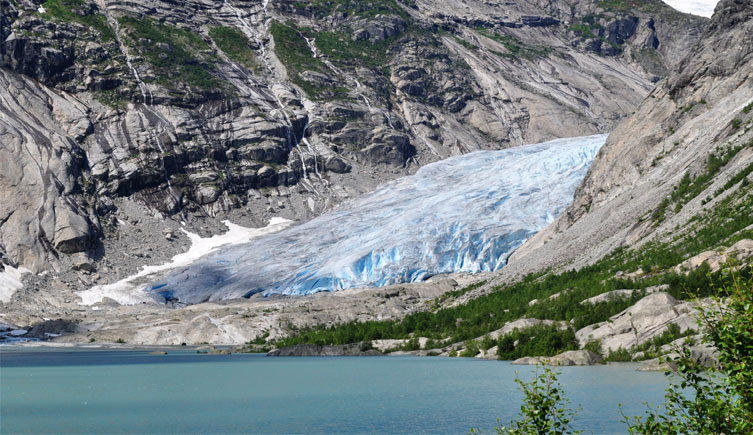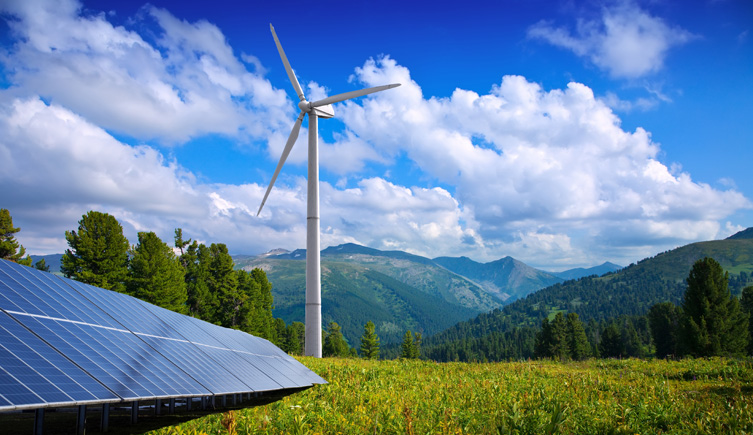Europe is warming at twice the global average rate, according to a new climate report.
The year 2022 was met with extreme heat, drought and wildfires across the continent, but the expanded use of renewable energy offers some hope for the future.

Europe experienced its hottest summer on record in 2022, with average temperatures for the year at 2.3 °C above pre-industrial levels. © Quintanilla/Shutterstock
Europe is warming at twice the global average rate, according to a new climate report.
The year 2022 was met with extreme heat, drought and wildfires across the continent, but the expanded use of renewable energy offers some hope for the future.
Europe is heating up fast.
The State of the Climate in Europe 2022 reportopens in a new window produced by the World Meteorological Organization (WMO) reveals how decades of warming is taking a major human, economic and environmental toll in Europe.
Since the 1980s, Europe has warmed at a rate of 0.5 °C per decade, more than twice the global average and making it the fastest warming of the regions the WMO assess.
As temperatures soared across the continent in 2022, sea surface warming reached new highs, glacier melt was unprecedented, and Europe experienced its hottest summer ever recorded.
Several countries also faced their warmest year on record, including the UK, Belgium, France, Germany, Ireland, Italy, Luxembourg, Portugal, Spain and Switzerland.
The most severe heatwave occurred in mid-July, with record-breaking temperatures in many locations, including the UK which reached a staggering 40 °C for the first time on the 19 July.
Professor Petteri Taalas, WMO Secretary-General, says, ‘In 2022, many countries in western and south-western Europe had their warmest year on record.’
‘Summer was the hottest ever recorded: the high temperatures exacerbated the severe and widespread drought conditions, fuelled violent wildfires that resulted in the second largest burnt area on record, and led to thousands of heat-associated excess deaths.’
During 2022, Europe experienced 40 extreme weather-related events which resulted in over 16,000 reported fatalities. The vast majority of these deaths were due to extreme heatwaves.
Dr Carlo Buontempo, Director of Copernicus Climate Change Service, which helped produce the report, says, ‘Unfortunately, this cannot be considered a one-off occurrence or an oddity of the climate.’
‘Our current understanding of the climate system and its evolution informs us that these kinds of events are part of a pattern that will make heat stress extremes more frequent and more intense across the region.’

A lack of winter snow combined with high summer temperatures contributed to the largest loss of glacial ice ever recorded in the European Alps in 2022. © Jan Zabrodsky/Shutterstock
Several factors are likely contributing to Europe heating up rapidly.
A primary reason could be that more warming tends to occur at higher latitudes. Europe includes part of the Arctic, which has been warming at a rate well above the global average since the 1990s.
The Earth’s ice sheets and glaciers play an important role in the climate system as they store huge volumes of water. As well as affecting sea levels, ice has a higher albedo, which refers to how much light is reflected by a surface. Loss of snow and ice means less sunlight is being reflected back out into space and is instead being absorbed by the darker surfaces of land and ocean, which have now been uncovered. This leads to more warming and therefore more ice melt.
In 2022, sea-surface temperatures across the North Atlantic area of the WMO Europe region were the warmest on record, and large portions of the region’s seas were affected by severe marine heatwaves.
The highest rates of surface ocean warming reached three to four times the global average and were felt in the southern Arctic, the eastern Mediterranean Sea and the Baltic and Black Seas.
On land, the Greenland Ice Sheet continued to lose mass during 2022, and periods of exceptional warmth led to the largest September surface melt in over two decades. Further south, a lack of winter snow combined with high summer temperatures contributed to the largest loss of glacial ice ever recorded in the European Alps.

Wind and solar power overtook fossil fuels in EU electricity generation for the first time in 2022. © erhnzngn/Shutterstock
Despite the somewhat bleak outlook, increased investment in renewable energy provides some silver lining for the future.
According to the report, more European Union (EU) electricity was generated by wind and solar power than by any other power source in 2022, overtaking fossil fuels for the first time.
But with the energy sector responsible for more than three-quarters of the EU’s greenhouse gas emissions and global temperatures set to breach 1.5⁰C for the first time in the next five years, there is still a long way to go to tackle climate change.
The EU plans to increase the take-up of renewables to reduce net greenhouse gas emissions by at least 55% by 2030 with the intent to become a climate-neutral continent by 2050.
In March 2023, the European Parliament also reached a provisional agreement to raise the binding renewable energy targetopens in a new window from 32% to at least 42.5% by the end of the decade. This new goal will represent almost a doubling from 2019 levels.
‘Increasing use of renewables and low-carbon energy sources is crucial to reduce dependence on fossil fuels’, says Petteri.
‘Climate services play a key role in ensuring the resilience of energy systems to climate-related shocks, in planning operations, and in informing measures to increase energy efficiency.’

We're working towards a future where both people and the planet thrive.
Hear from scientists studying human impact and change in the natural world.
Don't miss a thing
Receive email updates about our news, science, exhibitions, events, products, services and fundraising activities. We may occasionally include third-party content from our corporate partners and other museums. We will not share your personal details with these third parties. You must be over the age of 13. Privacy notice.
Follow us on social media